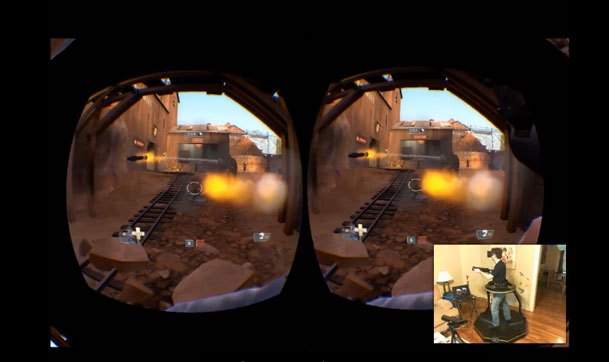When he was the god of code at iD Software, he would have Microsoft’s DirectX developers begging him for his support. That was just 3D, now Carmack is going to spice up our reality and he is still the king of gaming.
According to an interview given by John Carmack to Engadget, a new developer kit is on its way for Oculus Rift for 2014. Carmack told Engadget that he expects to see a Rift head-mounted display running Android as a standalone system with a SoC.
Carmack and company founder, Palmer Luckey, are in synch in wanting to drive the innovation of Rift as a wearable mobile device and realize that they have to drive the price of its build down in order to make it consumer friendly.
In addition, Rift will probably support 4K resolution at some point, but that the display quality is not the issue as much as head-tracking. Carmack intimated that in the next developer kit the company hopes to address both these issues.

In addition, Rift has to address issues with latency and judder that can make the virtual reality experience sickening. Oculus Rift’s CEO, Brendan Iribe, has admitted to feeling whoozy from using the device himself and that the company is actively working to address the technology issues.
Clemson University’s Human Factors Institute on Motion Sickness in Virtual Reality
Clemson University psychologist Eric Muth sees motion sickness as potential fallout from high-end technology that once was limited to the commercial marketplace moving to consumer use in gaming devices.
Microsoft’s Kinect is the latest example of technology with the potential to use a helmet-mounted display to immerse the gamer in a 3D virtual world. It uses sensors and software to detect body movement and positioning to control responses in a game environment, although he said the risk of motion sickness from Kinect itself likely is low.
“What was once limited to the military and high-tech research, where users were screened and monitored for negative reactions, is available now to the public,” said Muth, who is director of Clemson’s Human Factors Institute. “You’re not talking about carefully selected users like pilots and astronauts. Anybody with a few hundred dollars to spend can use it and the access will spread. The downside could be that people sensitive to visual disorders and susceptible to motion sickness suffer symptoms ranging from nausea to seizures. There needs to be a lot more research into the side effects.“
Muth’s research focuses on helmet-mounted displays that are used in virtual-environments technology. Before coming to Clemson 11 years ago, Muth spent three years in the Navy as an aerospace experimental psychologist working on wearable monitors and tracking systems to improve military training and to monitor soldiers, sailors and marines during combat. Now he uses helmet-mounted displays to study motion sickness, nausea and other upper gastrointestinal discomforts — the area of his graduate studies at the Pennsylvania State University under Robert Stern, a pioneer in biofeedback.
“Basically, when people are exposed to stimuli from a helmet-mounted display in the lab, it involves linking a subject’s head movements to the changing view in the virtual environment,” he said. “The response is complicated. It’s not just a perceptual adjustment.
“Years ago research showed that the brain can re-set an upside-down view of world to be right side up. Constantly changing images pose a bigger challenge for the brain, which has to deal with ‘lag’: the time it takes the computer system to update and display changing visual images corresponding to the users head movements. This may be a variable linked to motion sickness and other symptoms related to helmet-mounted devices.”
Muth and the other researchers at the Human Factors Institute seek to improve the way people interact with technology and devices.
“Helmet-mounted devices are going to be found everywhere as video gamers and the public get caught up in virtual reality,” said Muth. “We have already seen the popularity of 3D movies, and 3D television is making its way into our living rooms. We need to know more about the side effects and how to deal with them. I would not allow my kids to use this technology before checking their susceptibility to the downsides, and even then I would limit and monitor their access to the virtual world.”

The physical impact of virtual reality is going to be an issue. Stereoscopic displays have always had issues with eye fatigue and headaches. Virtual reality simulators are not for everyone. Immersive experiences are not natural but John Carmack didn’t get 3D gaming right first time around. With Rift, we may be at the point that 3D PC gaming was when Wolfenstein 3D first came out. Not Doom, mind you. Early days, but the learning curve is shorter for Rift because the desire is there in the gaming industry.






